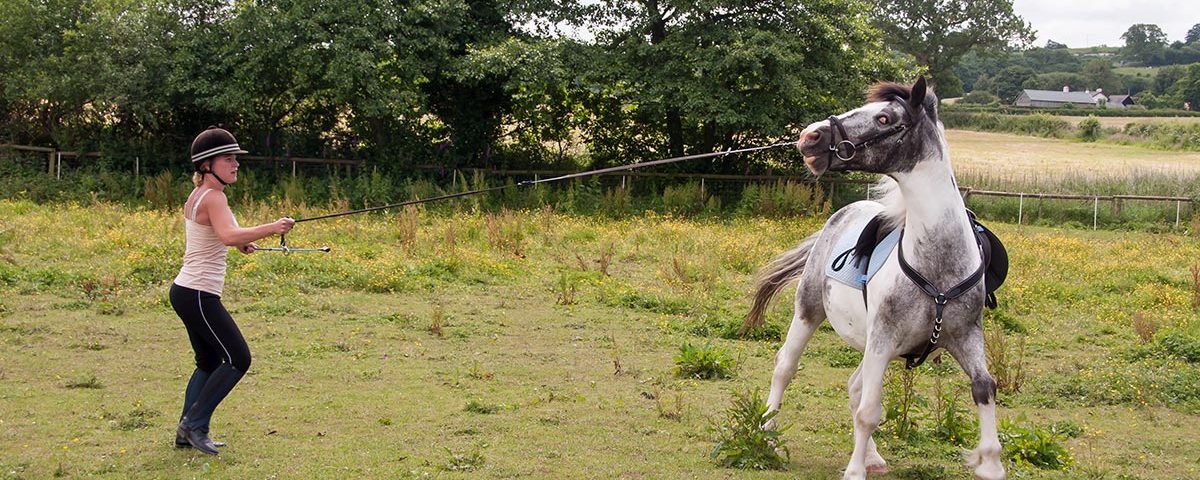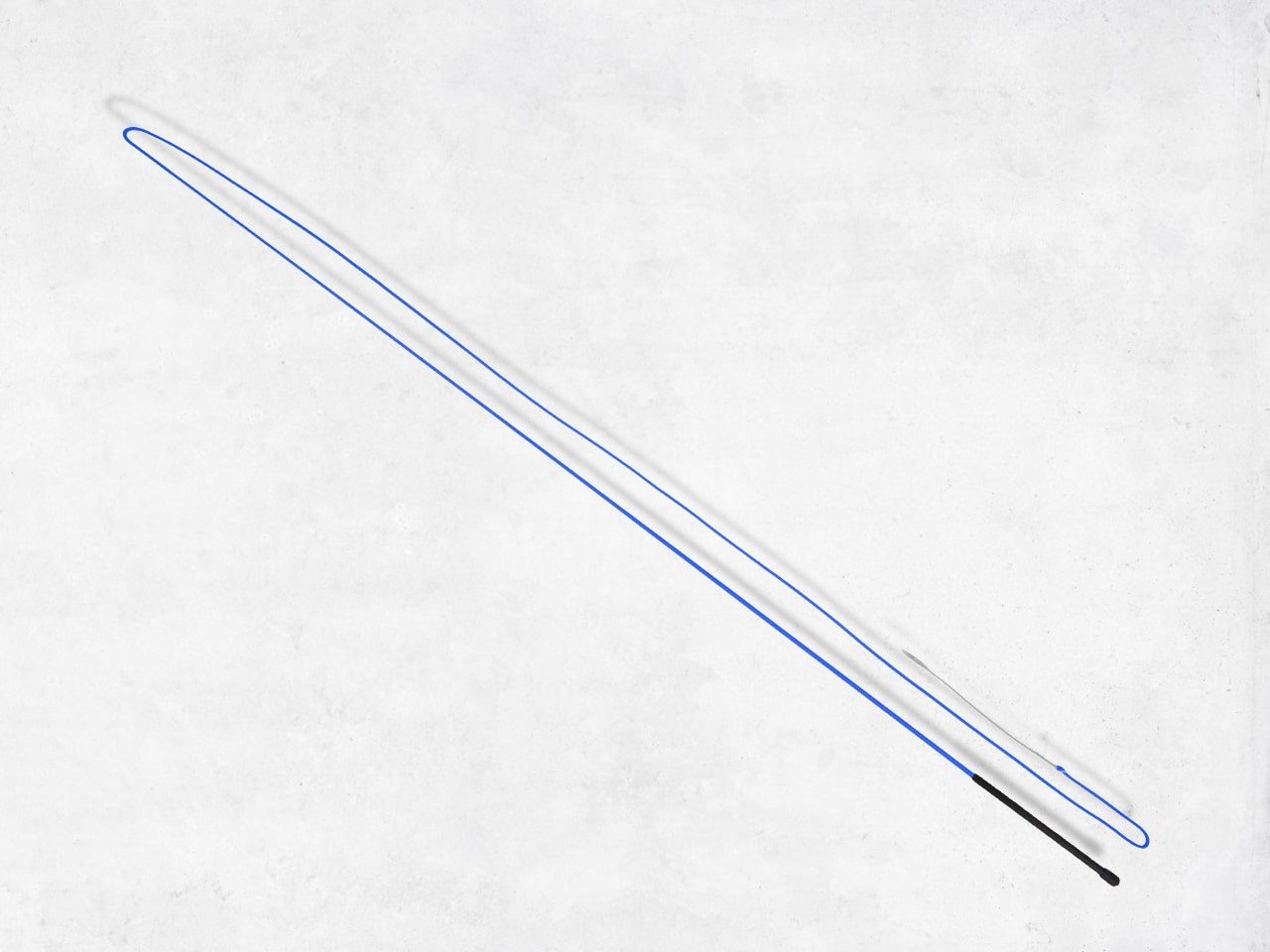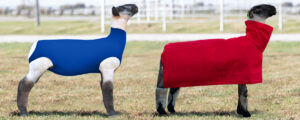Lunging is a method of horse training that involves driving your horse in a circle around you on a 20-meter rope called a lunge line using your voice and body language. When done correctly, this exercise benefits both you and your horse. Lunging builds respect and trust between horse and rider, and can also be an excellent source of exercise for your horse. Lunging is a common solution to horse behavior problems, and should be employed if your horse is bucking or running off with you. This method can be used to warm up the muscles of a stiff older horse before a ride, or conversely to cool down the high spirits of an excitable younger horse.

Prepare to Lunge Your Horse
Find a spacious, clean, quiet place to lunge your horse, preferably in a fenced enclosure in which you can make a circle of at least 30 meters. Remove any debris your horse could trip on, and make sure that there are no pits or holes you or your horse could step into. If either you or the horse is new to lunging, choose a place where neither of you will be distracted by other horses, riders, or traffic.
To begin lunging, you will need a 20-meter lunge line, a halter for your horse, a lunge whip, boots, and gloves. Bring your horse into the enclosure in which you plan to lunge and snap the lunge line onto the bottom ring of your horse’s halter. Gather the length of the lunge line in big loops in your left hand. Never, ever allow the lunge line to become wrapped around any part of your body. Your gloves will protect your hands from rope burn in case your horse pulls on the line.
In most cases, it is easiest to begin lunging your horse in a counter-clockwise circle because horses are accustomed to humans standing at their left sides. Hold the lunge line in your left hand in big loops so that your horse does not trip over it and hold the whip pointed towards the ground in your right. Stand at your horse’s shoulder and send him out by gently clucking and asking him to “walk.” As the horse moves forward, gradually release the line without allowing it to become lax. Move slightly towards the rear of the horse and encourage him to keep moving forward without you by showing him the whip if you need to. As the horse moves out, release the lunge line until it is no longer looped in your hand and it is fully extended so your horse is walking in a 20-meter circle around you. If your horse stops or tries to turn around, show him the whip and cluck at him to keep moving him forward.
Training Your Horse
Once you have your horse walking around you in a 20-meter circle, your lunge line will fulfill the purpose of the reins as a directional tool and your whip will simulate your legs as motivation to move the horse forward, just as if you were riding. Position your horse between your whip and your lunge line by forming a V-shape with you at the point, with the line connecting at the horse’s mouth and the whip pointed behind the horse’s haunches. You should be facing the horse’s flank, staying slightly behind the horse. Remain in the center of the circle as your horse moves around you. Begin with a brisk walk. Before any serious workout, warm up your horse with 5 – 10 minutes of trotting to avoid injury.
To transition the horse from a walk to a trot, ask the horse to “trot” and show him the whip. Do not continuously crack the whip, as this will cause the horse to become unresponsive to it, and never hit your horse with the whip. Once you have your horse trotting, it is a good idea to practice halts and transitions between the walk and trot. To slow your horse to a walk, in a calm, and low voice, say “whoa” and ask for a “walk.” To halt your horse, give a gentle tug to the lunge line and say, “halt.” Once you are able to control your horse at a walk and trot, you can canter him by raising your whip and exclaiming, “canter!” When you are finished lunging, ask your horse for a “halt” and walk towards him gathering the line in big loops. Do not pull your horse towards you or demand that he change directions on the line. In order to avoid stress and injury, always lunge your horse for an equal amount of time in both directions and never for more than forty minutes total.
Once you have the hang of lunging your horse, you should be able to command him to walk, trot, canter and halt in both directions, transitioning from any gait. Avoid lunging your horse for more than thirty to forty minutes at a time to prevent injury and always finish on a positive note, with your horse responding to all of your commands.




